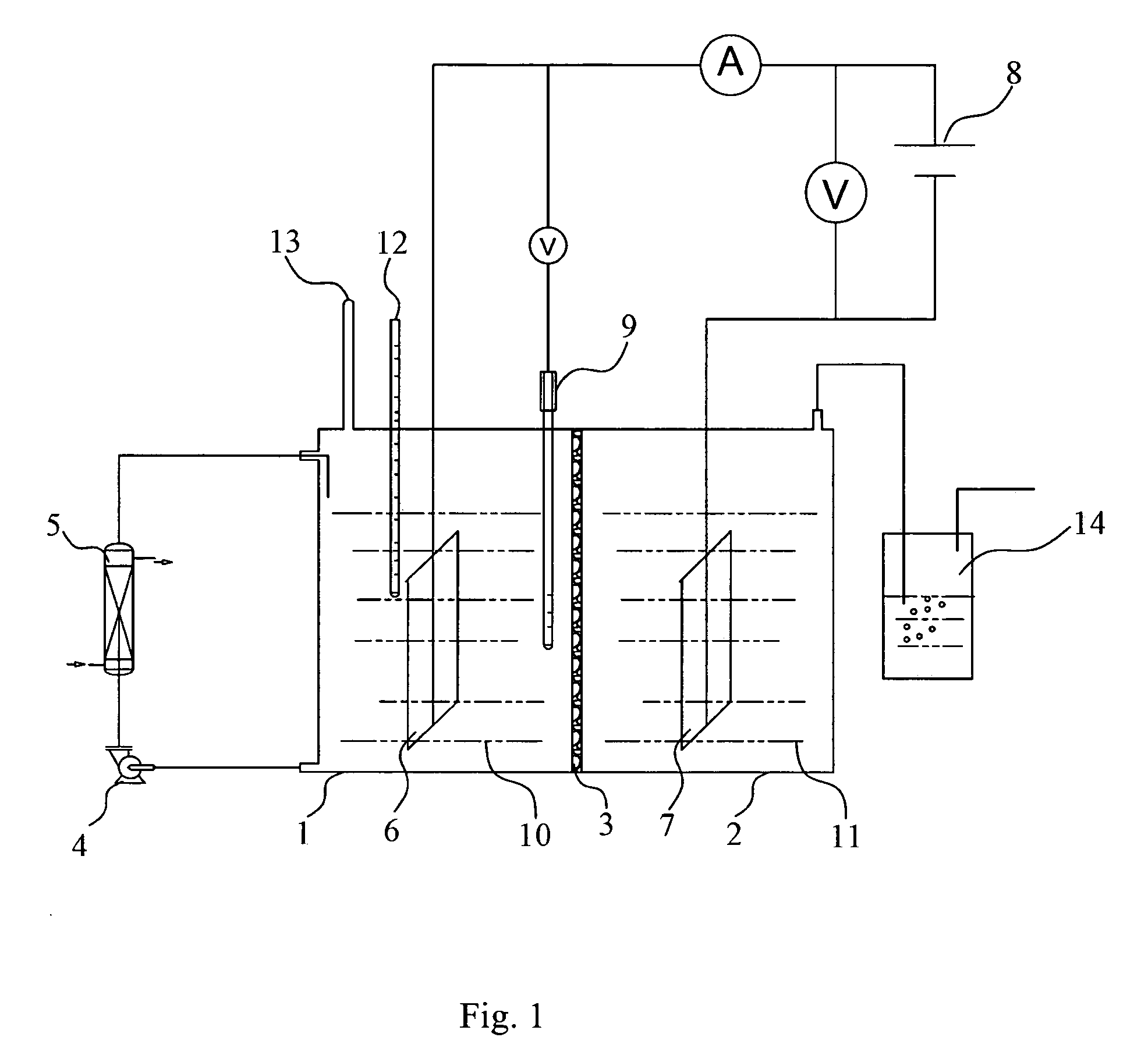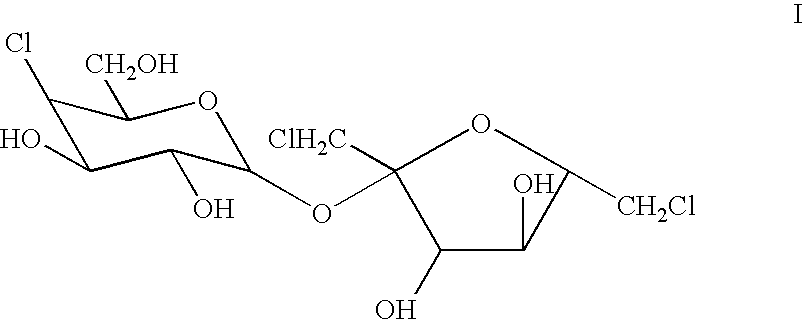Process for the preparation of sucralose
a technology of sucralose and sucralose, which is applied in the field of process for the preparation of sucralose, can solve the problems of complex method, difficult selective protection, complicated method, etc., and achieve the effects of high selective and more productive, economic and efficient, and high yield
- Summary
- Abstract
- Description
- Claims
- Application Information
AI Technical Summary
Benefits of technology
Problems solved by technology
Method used
Image
Examples
example 1
[0052] N,N-dimethylformamide (12 L, 99.5%) and distilled water (50 mL) were added into the anode chamber 1, to which sucrose (1000 g, 2.92 mol), acetaldehyde (150 g), potassium bromide (50 g) and (Et)4NBF4 (25 g) were then added. The circulating pump 4 was initiated to help mixing and dissolution of the components. A proper amount of aqueous solution of sodium chloride (10%) was added to the cathode chamber 2 as a cathode electrolyte solution 11.
[0053] The temperature in the anode chamber was adjusted to 15° C. by the heat-exchanger 5, and the transformer 8 was regulated to maintain an anode potential of 1.1V (vs. SCE). The electrolysis rate was estimated by observing bubbles of hydrogen generated in the cathode chamber and collected by a hydrogen collector 14. The current intensity applied was recorded, and the concentration of sucrose in the electrolyte solution was monitored using thin-layer chromatography. At the beginning of the electrolysis, some sucrose remained undissolved ...
example 2
[0055] A sucrose-6-ester was prepared in the same manner as described in Example 1, except that 50 g of potassium chloride was used in place of potassium bromide and the anode potential was maintained at 1.32V (vs. SCE).
[0056] The electrolyzed mixture was neutralized and evaporated under vacuum to provide a dark red syrup. The syrup was dissolved in hot methanol (1,200 mL), allowed to cool to 10° C. and kept over night. The crystal separated out was collected and purified to afford 417 g of crude sucrose-6-acetate.
[0057] Analysis of the crude sucrose-6-acetate with liquid chromatography: sucrose-6-acetate 78.65%, sucrose-4-acetate 6.2%, sucrose-diacetate 2.3% and sucrose 1.1%.
example 3
[0058] A sucrose-6-ester was prepared in the same manner as described in Example 1, except that 375 g benzaldehyde was used in place of acetaldehyde and 50 g of (n-Bu)4NCl4 was used instead of (Et)4NBF4.
[0059] The electrolyzed mixture was neutralized and evaporated under vacuum to provide a dark red syrup. The syrup was dissolved in acetone (2,000 mL) at 50° C. with stirring, allowed to cool to room temperature and then seeded with a crystalline of sucrose-6-benzoate (3 g). Crystallization was allowed to proceed overnight and the product was collected, washed with a small amount of acetone and dried under vacuum to afford 526 g of crude sucrose-6-benzoate.
[0060] Analysis of the crude product with liquid chromatography: sucrose-6-benzoate 83.1%, sucrose-4-benzoate 4.3%, sucrose-dibenzoate 0.75% and sucrose 1.9%.
PUM
| Property | Measurement | Unit |
|---|---|---|
| molar ratio | aaaaa | aaaaa |
| temperature | aaaaa | aaaaa |
| temperature | aaaaa | aaaaa |
Abstract
Description
Claims
Application Information
 Login to View More
Login to View More - R&D
- Intellectual Property
- Life Sciences
- Materials
- Tech Scout
- Unparalleled Data Quality
- Higher Quality Content
- 60% Fewer Hallucinations
Browse by: Latest US Patents, China's latest patents, Technical Efficacy Thesaurus, Application Domain, Technology Topic, Popular Technical Reports.
© 2025 PatSnap. All rights reserved.Legal|Privacy policy|Modern Slavery Act Transparency Statement|Sitemap|About US| Contact US: help@patsnap.com



